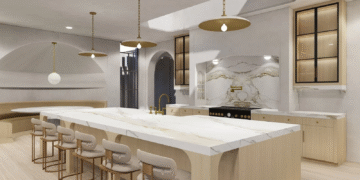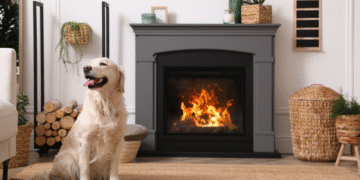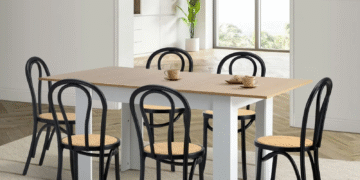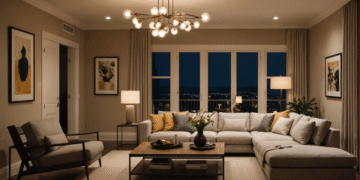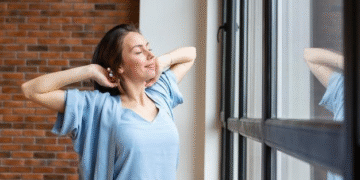The evolution of interior spaces has reintroduced the importance of door design in architectural planning. With a growing emphasis on aesthetic appeal, functionality, and space efficiency, the traditional hinge is gradually being supplemented by more advanced mechanisms. At the forefront of this innovation is the pivot hinge, a clever piece of hardware that has begun to reshape the future of door designs in both residential and commercial spaces.
The Mechanics of Pivot Hinges
Pivot hinges operate on a simple principle, yet they offer a complex range of benefits. Unlike traditional door hinges that require the edge of a door to be anchored to the door frame, pivot hinges allow the door to rotate on a single point or axis, usually located at the top and bottom of the door. This pivotal movement provides a unique opening experience and adds a touch of modernism to any space.
The Benefits of Pivot Hinges in Modern Architecture
The rising popularity of pivot hinges in door design is not without merit. Among their numerous advantages, these hinges allow for wider and heavier doors without compromising on the smoothness or reliability of the door’s operation. Such functionality is especially beneficial for grandiose entryways or for applications requiring a seamless architectural finish.
Pivot hinges also offer an increased level of flexibility in design. This is particularly evident in custom-designed doors, where the placement of the pivot can be adjusted to achieve a desired aesthetic or functional outcome. Furthermore, the discreet nature of pivot hinges helps maintain clean lines and an uncluttered look, which is greatly preferred in minimalist design trends.
Space-Saving Solutions with Pivot Hinges
One of the lesser-known advantages of using pivot hinges is their space-saving capability. Swinging doors can consume valuable real estate within a room when opened. The pivotal movement facilitated by pivot hinges can be designed to minimize the arc of the door swing, thus conserving space in tighter quarters.
Moreover, the ability to custom-fit doors into unconventional spaces without the boundary constraints typical of traditional hinged doors can make pivot hinges particularly appealing to those looking to optimize space in urban dwellings or in maximizing floor space for commercial use.
Enhanced Durability and Performance
Pivot hinges are also revered for their durability and performance. These hinges distribute the weight of the door more evenly than conventional hinges, which can lead to a longer lifespan for both the door and the hinge. The pivot hinge’s robustness makes it an ideal choice for heavy entrances, such as large wooden doors, that may otherwise strain conventional hinges.
The seamless operation of pivot-hinged doors equally contributes to a quieter and smoother experience. Whether it’s the silent majesty of a grand entrance or the subtle sophistication of an interior door, pivot hinges can manage the job effortlessly without the creaks and groans associated with some traditional hinges.
Customisation and Creativity with Pivot Hinges
Another significant aspect of pivot hinges is the sheer variety available, making them suitable for a broad range of door designs and themes. They open avenues for architects and designers to explore creative and unconventional door designs that might not be possible with regular hinged doors.
Customizable pivot points allow for asymmetrical door designs, creating dynamic visual interest. Doors can be designed to appear as if they are floating, or create a statement with a wider-than-average entrance, all thanks to the flexibility provided by pivot hinges.
Overcoming Challenges with Pivot Hinges
Despite their benefits, pivot hinges might pose certain challenges in installation and maintenance. Ensuring precise alignment during fitting is crucial to prevent undue stress on the pivot itself. However, when installed correctly by a professional, pivot-hinged doors provide unparalleled performance and longevity.
When it comes to upkeep, the concealed nature of the hinge can make access for adjustments a bit tricky in comparison to the exposed setup of a traditional hinge. Yet, the minimal maintenance required often offsets this minor inconvenience.
The Aesthetic Edge of Pivot Hinged Doors
Setting aside technicalities, the aesthetic edge provided by pivot hinges should not be underestimated. The ability to support larger-than-life doors offers a dramatic first impression that is bound to resonate with visitors. The clean lines and the refined motion of doors with pivot hinges speak to a modern sensibility that many designers strive to present.
In a market where uniqueness can set a property apart, having such features could aid in elevating the appeal and possibly even the value of the space. It’s more than just a door – it’s an experience and an expression of design sensibility.
Embracing Pivot Hinges in Door Design
To conclude, the incorporation of pivot hinges into door design is more than a trend – it’s a sophisticated step towards modernizing spaces in aesthetic and practical terms. Their mechanics facilitate an elegance of movement and flexibility that traditional hinges simply cannot match.
From space-saving marvels to audacious entries, pivot hinge-equipped doors are transforming first impressions and interior environments alike. As we move towards future-oriented designs, pivot hinges stand out as the cornerstone in this evolutionary process, promising to revamp door aesthetics and functionality for many years to come.



